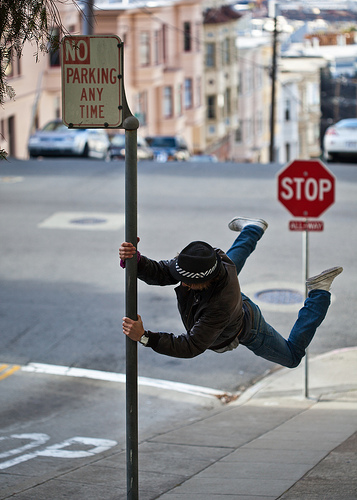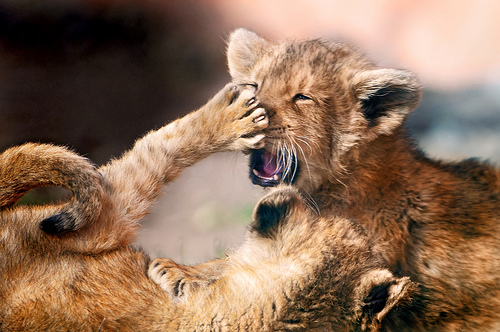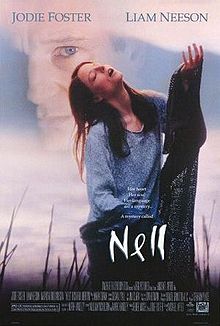What’s Your Motif?
Motifs? Most writers don’t really know what they are, but they can make the difference between an okay book and a terrific one. Since we’ve just discussed the topic theme in recent posts (by looking at some of my favorite movies), now would be a good time to look at motifs. Not many writers consciously plan out motifs to use in their novel, but sometimes they come naturally into the story. Motifs are symbolic elements packed with inference, but they don’t have to appear in your story as an actual item. Motifs can be a word or phrase, a concept, an image—just about anything that can be repeated with significance and symbolism. The weather can be a motif, for example, if each time something terrible is about to happen, “lightning” strikes.
Using motifs in writing fiction is one of the most powerful and evocative ways of getting across your themes in your novel. Few authors use them, and few use them well. My favorite novels of all time are ones that use motifs beautifully throughout their novel, and these elements weaving through their stories tend to stay with me for months and years after I’ve read the book. Why is that, and just what are motifs and how can they be utilized effectively in fiction?
A Splash of Color
Two definitions of motif in Merriam-Webster’s give a good feel for what a motif is: “a dominant idea or central theme; a single or repeated design or color.” Think about a motif as a splash of color that you are adding to your story palette—a very noticeable, specific color that appears from time to time and that “blends in” beautifully with the overall picture you are painting. As an example, you could say that I just introduced a motif in this discussion by using the concept of color to emphasize my theme.
Motifs can be an object, an idea, a word or phrase, a bit of speech—and you can combine these in your novel to create richness. I like to have at least two or three motifs woven in my novel, and I’ll give you an example by referring to my contemporary drama/mystery Conundrum.
Motifs with Double Meanings
In Conundrum, my protagonist, Lisa, is searching to uncover the truth regarding her father’s bizarre death twenty-five years earlier. Her interest and effort is prompted by her brother’s suicidal bipolar condition, which she believes is exacerbated by the myths and burdens surrounding their father’s death. So as Lisa embarks on this journey, I brought into play a number of motifs. The first is obvious—the word conundrum, which is the overall theme and serves as the title. The best use of a motif is in your title, and a great title will tie in to your book’s theme, often as both a motif and a double meaning. for example—Jodi Picoult’s book titles often do this, as seen in Saving Faith (faith being both the girl character’s name and hinting at her need of being saved) and Plain Truth (where plain refers to the Amish people by that name as well as the book’s plot wherein the plain truth needs to be revealed in the case of a mysterious murder among the Amish). So, in Conundrum, I open the novel with an actual word conundrum, one that has great symbolism to Lisa’s quest. She tells of how she and her brother told conundrums through their teen years, and then I introduce a specific conundrum that serves as another motif in the book.
Motifs Bring Cohesion
Lisa’s father’s specialty was in Boolean algebra. Lisa discovers a conundrum based on that algebraic formula of “and, or, or not.” What I did, then was take two motifs—the conundrum and the father’s profession—and found a way to tie them together, which is a great thing to do. Throughout the novel, Lisa comes across clues that make her think “and, or, or not.” Her quest is one big conundrum. and the next motif comes from the actual conundrum she found—where two guards each stand in front of a door, each claiming they guard the door to enlightenment, but one is lying and one is telling the truth. The conundrum requires the puzzle-solver to figure out which door really does lead to enlightenment. You can imagine why I was so thrilled to run across this conundrum, as it represented Lisa’s search for truth (enlightenment) but with the confusion of not just many doors but many guards claiming they were telling the truth.
I hope you can see here the motifs at work and how, throughout a novel, these can surface to bring cohesion to a story. You can use an object, like a balloon for example, to symbolize important qualities. A balloon could represent freedom, the need for release. A slow-growing tree could represent faithfulness, steadfastness through all seasons, something a character can be viewing out her window at different times in her life. One of my favorite books, The Art of Racing in the Rain, uses the motif of race-car driving throughout the book as metaphor and symbolism.
Motifs Tie Into Theme
In To Kill a Mockingbird, the bird itself is a great motif. It comes to represent the idea of innocence; thus, to kill one is to destroy innocence. This ties in beautifully with the books themes and plot involving guilt vs. innocence (with layers of meaning, including a legal one). After Tom Robinson is shot, Mr. Underwood compares his death to “the senseless slaughter of songbirds” and at the end Scout voices that hurting Boo Radley would be like “shootin’ a mockingbird.” Perhaps the most significant use of this motif is the scene in which Miss Maudie explains to Scout: “Mockingbirds don’t do one thing but . . . sing their hearts out for us. That’s why it’s a sin to kill a mockingbird.” That Jem and Scout’s last name is Finch (another type of small bird) indicates that they are particularly vulnerable in the racist world of Maycomb, which often treats the fragile innocence of childhood harshly. I’m sure Harper Lee used this motif very deliberately.
So as you plot out your novel, or tackle your rewrite, think of two or three motifs you can weave in, then go back through your book and place them strategically. If you can somehow use the motif in your title, even better. And if you can think of motifs that parallel and/or enhance your overall theme, you will have a book that will be unforgettable. Pay attention as you read great novels to see if you can spot the motifs the author has used. You will be surprised how you will start seeing them if you pay attention and look for them. May these thoughts spark some ideas in your head and get you running to your pages!
This week, come up with some motifs for your novel. If you already have some in place, think of other spots in other scenes where you can use that motif again. If you can think of some great novels that use motifs powerfully, share them in the comments!
Photo Credit: seyed mostafa zamani via Compfight cc












She walked into the room with her hair down, I knew what that meant. She didn’t realize she was using the same signal…….
His fingers began twitching in anger even before I spoke, I knew it wasn’t going to be easy. Without realizing it, he was telling me that he wouldn’t agree no matter what I said.
I love writing and I have been doing it for almost forty years. However,I must say I write more for me than all my readers put together. It is what I do.
Thank you for your discussion on “Motifs.” The titles for my novels are titles of hymns and weave themselves through my stories. I never even thought about it being a motif, but you are so right – everyone remembers the stories based on the motif!
Wonderful post! Thank you. I’m going to go back over all my WIPs and look for ways to insert motifs.
Thank you for this post. The title of my memoir WIP is the motif of my story: Tell me what He did. It has a dual meaning. My mother asked me this question every morning after my father’s incestuous visit. “I heard him in your room last night, tell me what he did.” I’d have to tell her and she wrote it down in notebooks, filling up two notebooks, several entries per page. The second meaning of the title has to do with the healing from my past – the He refers to Jesus. I met a wonderful pastor who introduced me to the Father and the Son and He healed me. I am praying that my story will bless others who have been abused.
Have a blessed day.
Heather
Great title and motif. I’m glad you could turn your trial into your testimony!
What a beautiful and synchronous post. It’s like we’re on the same wave length this week! I wrote something similar about seeing connections and how I have a preference for stories that use them. In my current work-in-progress, I use a specific brand guitar to demonstrate a connection to the theme, but I also use it as a link from the past to the present, demonstrating the character’s growth. I have a few others as well. I’m a lover of symbolism! When they’re not in a story, something feels missing to me.
I enjoyed the article on Motif. I can see how it works. I didn’t detect it in some of the stories because I didn’t know to look for them. I bet I do now. I just finished writing a book on Spirit of the Red Candle. The Red Candle takes on it’s own personality. I used it throughout the story. I was using it deliberately and didn’t know it had a title of motif.
I enjoy your articles. I always take time to read through them. Thank you for taking time to write them.
I’m glad this post has helped you! Thanks for the kind words.
Thank you for your very information posts. For authors who desire to not simply write a good story, but want to create something uniquely special, your advice will help go a long way to making that dream a reality. I’ll be doing some deep thinking about incorporating motifs while writing Forbidden. Thank you
Thanks again for another great blog – I had no idea motifs could be used in writing until now!
Hi Susanne,
I love your blogs. They’ve helped more than I can express with my WIP. I just found your blog in the last month and have read every single entry and comments since you began and took notes. Thank you for all the helpful tips and your dedication to help writers make their books richer.
As I read about motif, I wondered what the difference is between symbols and motif? I plan to use weather and light as a symbol throughout my book. How would this be different than a motif?
Thanks,
Rachelle
Hi Rachelle! Great to see you here. Great question that got me thinking. A symbol is something that stands for something else. I think of it more as a one-to-one thing, like a lion is a symbol of courage. Now, you can have a lion in your book in some fashion that stands for courage, like on a banner, and most people will “get” that symbol. Just as Aslan is the “Lion” representing Christ. To make that symbol turn into a motif would be to use the lion as a thematic element that is repeated through a novel. If you just have a lion on a banner, that’s a symbol. But if throughout the book you use a lion to imply themes and characteristics that weave through your characters and story, you have a motif. It may only apply to just one character, but it would crop up more than once and be noticeable. Merriam-Webster’s says “a usually recurring salient thematic element”–salient meaning prominent, noticeable. I give some examples in this post of repetitive motifs. Since they are thematic, they can also overlap as themes, but theme is a bit different as well. One theme of my book might be that everyone has a “lion” within them (just winging it here!) but the lion motif will crop up in places to imply lion characteristics, or be used as a metaphor–like I used the idea of a balloon or a tree as motif in the post. Hope this clarifies it a bit. Use them all! You can’t go wrong!
As a new fiction author this was very insightful to me I will remember to add some kind of motif in the future to my books
Thanks,
Poncier.
Okay I get it. At first I was thinking I really didn’t have any motifs, but just the title of my series is a motif itself. Great post!
Hey, great post! It’s funny, I just posted something related, though I took a somewhat different tack and kept the focus on image systems. Check it out:
http://weedlit.blogspot.com/2012/06/reaching-for-sublime-image-systems-in.html
As always what you place here rings true not only with the writers ideas; when properly placed our readers will not only notice them, but wait for them making the connection of what they mean to our characters and their development of their storys. I feel if the writer places something in the begining and continues here and there through out the story it won’t be out of place at the end; more like what the reader was waiting and looking for.
Susan,
I couldn’t agree more with the subject of motifs. Especially To Kill a Mockingbird reference. After reading the book only last month, I rewrote parts of my current manuscript to include a platinum bangle and tattoo with the motif of a Lemniscate or infinity symbol. The etched/branded symbol is both a reference to both the character’s status as well themes of destiny and fate. Yes, motifs give stories a definite visual quality for writers and readers with a ready reference to anchor a story.
Namaste.
Susan
Thank you! It is not often one experiences true generosity. Generosity of spirit which the time and energy oozing from your blog clearly shows. Thanks to you I have just recognised my Motif, which is has followed me all my life and in my travels and somehow represents my philosophy and a host of other things. He is a sacred “animal”in Madagascar, representing Taboo, ancestors, portent and the ability to change, adapt and evolve. He is unique and true to himself nevertheless. Of course, most important of all is his unmatched and unique ability to look forward and backward simultaneously AND at the same time whilst blending into the scenery. He can be devastating with his tongue. Of course, my Motif, is the chameleon.
You are good. It’s the silence between the words that tells the story, and the motifs that lie therein are what fills the silence. You have given me something to think about. Excuse me now, I have to go and write something!
Excellent post. I suppose motif would be the same as a “thread” that ties one part of the story to the next? Thanks for your generous tip.
Your Voice is your instrument. Keep that in mind. But you
must develop your “ear”. Listen to how people talk and mimic them in your mind.. . A good exercise is to get a new, un-sharpened pencil. Place it in your mouth, like the bit in a horse’s mouth, and clamp it in your back teeth. This will inhibit your tongue. Then read lines. Find a radio commercial script and read that, try to get the time down. Then remove the pencil and read the same copy. Notice how different you sound. . . Just like any professional musician you will be called upon to do different “colors” in your voice. How many different ways can you make your voice sound? Strong. Weak, Old, Young, Tired, Happy, etc. . . Here is another exercise to practice. Read a line and with your voice convey the different emotions or feelings (above) but in the same line. . . Then listen to different accents and copy their sounds. Can you do French, German, Italian, Russian and Spanish accent? Practice those by listening to those people speak English. Do the same line in different accents. . . A voice recorder and ear phones is a great tool to use to learn to listen to yourself.. . Also listen to the voice actors and actresses in feature length cartoon films. They are the best. Can you read a line and sound like a cat, a dog, a lion? These are some of the things you will be called on to do. . You will usually be given an audition (until you have a body of work to show).. . Warm up your voice. Do voice exercises for 20-30 minutes, including singing in keys that are beyond your normal range. You can find scripts and warm up routines in books at the library.. . Look for an agent. The agent is your “sales person”. The agent knows what the market is looking for and will be an adviser or mentor to you.. . It is good you are starting now. You will have a very good future as a voice actress. There are many ways to make a good living: Radio, Films, Television, Cartoons.
I remember reading Lord of the Flies in English class at some point in High School. We talked about how the conch was a motif. I forgot about that conversation up until now lol. Your post reminded me of an object in my story that could definitely evolve into a motif.
P.S. now I feel like rereading To Kill A Mockingbird. I always wondered why it was titled that. I don’t think we ever discussed it in school, but it makes so much sense now.
I just watched to Kill A Mockingbird while on vacation in the mountains. I have a motif that I’ve cemented in my blog already, Out of the Fishbowl ~ Into the Ocean. Right now I’m setting up my website with my son’s help but I have two blog spots already. I’m just beginning with the social media end of writing, so I need all the help I can get. Thanks for the great post.
As usual, your article is timely and packed full of helpful advice!
While writing away last night I was aware of the motifs running through this particular project and how they pull the elements of the narrative together. As ever, a great big thank you!
Thank you so much for sharing this mind-opening post! It gave me one of those “bolt-of-lightning” flashes of insight, as I realized that the title of my memoir, “A Runaway Life,” is a motif that I have unconsciously used as the seed or core around which every scene is constructed. What a shot in the arm! Many blessings to you…